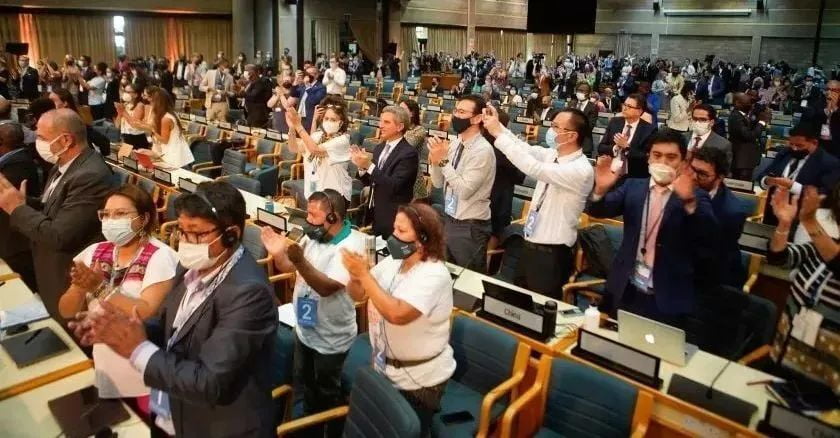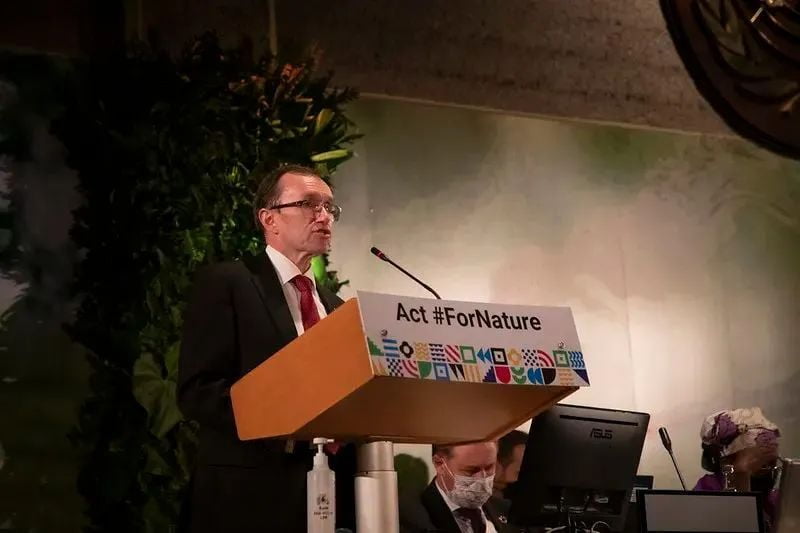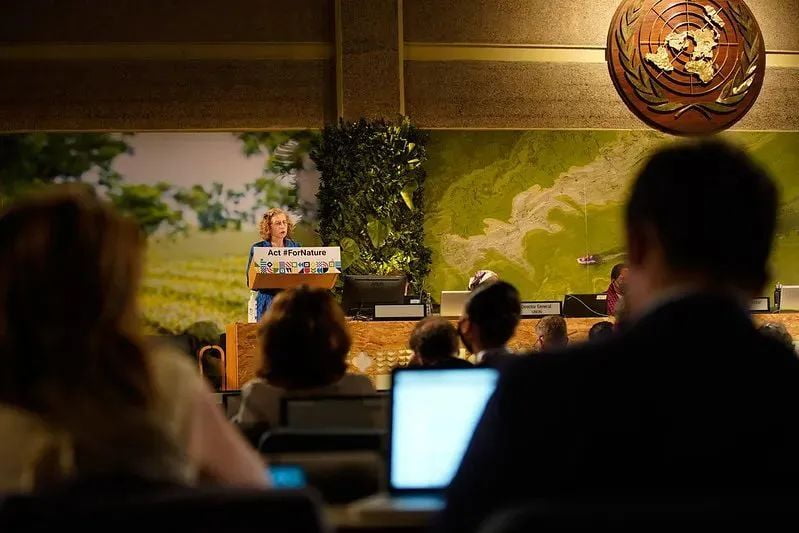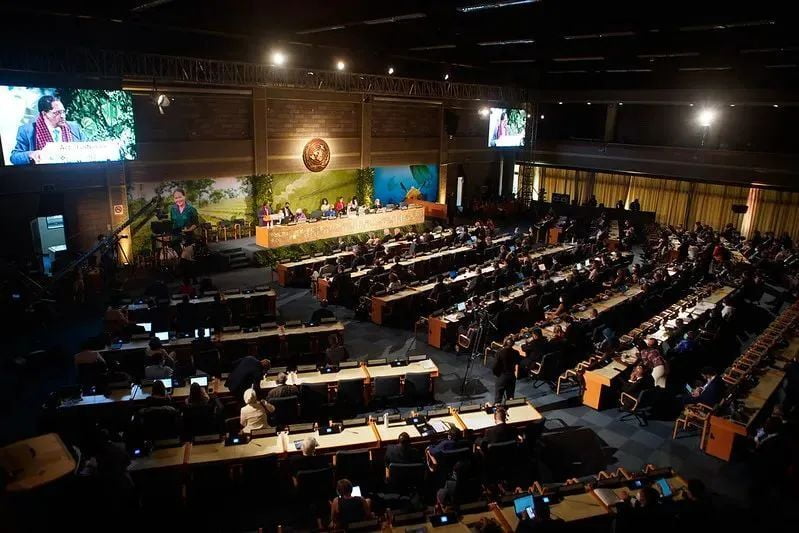With the United Nations Environment Assembly (UNEA) recently backing a legally binding plastic waste treaty, the press examines what this could mean for the packaging industry, including the following three points: How does it align with existing goals? What is the direction of the industry? What uncertainties remain?
At the United Nations Environment Assembly (UNEA-5.2) in Nairobi, heads of state, environment ministers and delegates from 175 countries supported a UN resolution to develop a legally binding treaty on plastic waste. The Intergovernmental Negotiating Committee is scheduled to begin work on the treaty in the second half of 2022, with the goal of completing it by the end of 2024.
In its conclusions, UNEP adopted fourteen resolutions. The two most likely to have a direct impact on the packaging industry are the "Resolution to end plastic pollution: towards an international legally binding instrument" and the "Resolution on strengthening the circular economy for sustainable consumption and production".
The UN Environment Programme draft resolution on plastic pollution recognizes that "the high and rapidly increasing levels of plastic pollution are a serious environmental problem on a global scale, with negative impacts on the environmental, social and economic dimensions of sustainable development", with specific reference to the impact of plastic pollution on the marine environment and its potential knock-on effects.
UNEP emphasizes the importance of "global coordination, cooperation and governance" in addressing and taking action against plastic pollution, with the goal of "long-term elimination". UNEP says it recognizes "the wide range of approaches, sustainable alternatives and technologies that address the full life cycle of plastics" and acknowledges that "there is no single approach" to solving the problem.

01 Existing Routes - Solutions
In January, more than 70 organizations - including companies active in the packaging industry such as Amcor, The Coca-Cola Company, Yizi, Mondi, Nestlé, Procter & Gamble, PepsiCo and Unilever - issued a statement calling for a legally binding UN treaty to support the transition to a circular economy in plastics in UNEA-5.2. How will the treaty affect the packaging industry now that it has the support of the General Assembly?
The legally binding instrument developed by UNEP will "promote the sustainable production and consumption of plastics", which certainly includes the packaging industry as one of the largest end-use markets for plastics, which statistically has a 40.5% market share in Europe Plastics Europe.
In addition, the draft resolution highlights "the importance of promoting sustainable design of products and materials so that they can be reused, remanufactured or recycled to remain in the economy for as long as possible along with the resources used to make them" - a statement that reflects some of the sustainability commitments the packaging industry has already made.
For example, last year, UNESDA Soft Drinks Europe committed to achieving recyclability by 2030 by having the beverage packaging industry use 100% recycled and/or renewable PET for its bottles, where technically and economically feasible.
Elsewhere in the bottled beverage space, Coca-Cola last month pledged to sell at least 25 percent of its global portfolio in refillable or recyclable containers by 2030. The division is also actively developing alternatives to virgin plastics, such as Coca-Cola's plant-based (bPET) bottle prototype and Choose's paper bottle technology, recently acquired by HP, Paboco and Pulpex. Although these are still in the early stages of development, they have the support of companies such as Coca-Cola, Procter & Gamble and Unilever, which backed the initial call for a UN treaty on plastic pollution. Such commitments and research projects may be consistent with the overall push in the UN Environment draft resolution to promote reuse and recycling and to keep plastics out of the environment.

At the same time, research and innovation is underway to increase recycling rates, especially for hard-to-recycle plastics, to further keep plastics in the economy, another focus of the UN Environment draft resolution.
CEFLEX specializes in flexible packaging, only about 17% of which is currently recycled, and has just received funding from UK Research and Innovation (UKRI) to develop Design for the Circular Economy (D4ACE) guidelines to promote the redesign of flexible packaging and collect recyclability at the forefront. Styrenics Circular Solutions (SCS) has also developed Super Clean technology to assist in the mechanical recycling of polystyrene, with the goal of creating an infinite loop and closed loop system for food grade rPS.
The draft resolution sets forth a plan to "promote research and development in a sustainable, affordable, innovative and cost-effective manner. This means that the packaging industry could see more investment and research interest in improving recycling rates and providing innovative plastic solutions, which may still be needed for certain applications.
02 How much room for improvement
However, the Ellen MacArthur Foundation, in collaboration with the United Nations Environment Programme (UNEP), said in its second annual Global Commitment to a New Plastics Economy Progress Report released in 2020 that progress in promoting recyclability and transformation of plastic packaging has been limited to reusable packaging, with elimination efforts apparently still focused on a relatively small number of materials and formats. The organization urges companies to take "bold action" on types of packaging that are not yet recyclable or are difficult to recycle.
This view seems to be shared by participants who specialize in research on plastic waste and the marine environment. Speaking to Packaging Europe after the publication of Breaking the Plastic Wave: A Comprehensive Assessment of Pathways to Stop Marine Plastic Pollution, SYSTEMIQ Associate Yoni Shiran commented: "The current commitment and action, while a great first step, is not enough. Industry must be more ambitious.
"For example, only 20 percent of companies currently have a plastic commitment. That means 80 percent don't, and should catch up."

The UNEA treaty may force companies that do not already have a plastics policy to begin introducing such policies into their operations.
Importantly, the UNEP draft resolution refers to regional and national governments, stating that "each country is best placed to understand its own national circumstances, including stakeholder activities related to addressing plastic pollution.
This could mean that the packaging industry begins to see more government legislation to restrict plastic use, as countries express support for the UNEA treaty, which aims to "develop, implement and update national action plans that reflect a country-driven approach.
The draft resolution recognizes that plastic pollution, including microplastics, may also affect the packaging industry. Some companies are turning to biodegradable and/or compostable plastics to address issues such as ocean pollution.
However, SPRING warns against the full use of compostable options due to the risk that biodegradation may produce microplastics. On top of that, some so-called bio-based plastics may interfere with existing efficient recycling streams.
Dr. Ashlee Jahnke, research director at Teysha Technologies, explains, "Biodegradable plastic packaging must be clearly defined for the consumer. If packaging companies don't adequately explain how consumers can dispose of these plastics, they may end up doing ordinary plastic recycling - which can cause problems in the recycling process."
Beyond that, alternative technologies such as chemical recycling, which aim to improve the recovery rate and quality of certain plastics, are considered by some to be controversial and untested. WWF recently argued that there is limited evidence that chemical recycling can provide additional benefits to chemical recycling, adding that it is concerned that this could lead to further problems such as competition for feedstock and a lack of upstream innovation.
This touches on the key argument for ensuring that solutions to plastic pollution do not lead to solutions that could increase environmental damage elsewhere.
There are indications that government policies, such as the French ban on plastic packaging for fruits and vegetables, may increase food waste, undermine the ability of businesses to plan and implement sustainability strategies, and focus more on public pressure than on scientific evidence.
UNEA and the packaging industry will have to consider these challenges as they continue to develop resolutions and ultimately implement the treaty.
UNEA's treaty may update the packaging industry's efforts to achieve plastic design, use and end-of-life goals, and promote review and accountability.

03 What remains to be seen
In its draft resolution, UNEP recognizes that a final instrument "could include binding and voluntary approaches". As a result, it is unclear what is within the "legally binding" scope of the UN treaty on plastic pollution, and how and by whom it will be implemented. The intergovernmental negotiating committee will consider "obligations, measures and voluntary approaches to support the achievement of the instrument's objectives," although it added that "some provisions may be flexible enough to allow countries to decide on their own commitments that take into account national circumstances at the time of implementation."
In the case of the EU's Single-Use Plastics Directive (SUPD), this can lead to uneven or fragmented implementation.
The EuPC issued a statement saying it was "very concerned" that the SUPD had been adopted too quickly without a clear national strategy, resulting in a "patchwork of packaging laws" that it suggested could undermine the EU's single market. At this point, it remains to be seen how the UN treaty will interact with existing plastics and packaging laws, and whether companies and states are likely to challenge geographic differences in future implementation.
At the same time, the draft resolution "calls upon all Member States to continue and intensify their activities and to take voluntary measures to combat plastic pollution", while "taking into account national circumstances". Thus, it appears that until the treaty is finalized, countries will continue to set their own goals for managing plastic pollution.
According to Breaking the Plastic Wave, government action "is typically focused on low-leakage countries," and a five-year delay in implementing plastic pollution solutions could result in an additional 80 million tons of plastic entering the ocean by 2040. While measures of the magnitude of the UN treaty will take time, it is important that countries and companies are not complacent and act before and in parallel with the development of the final treaty.

